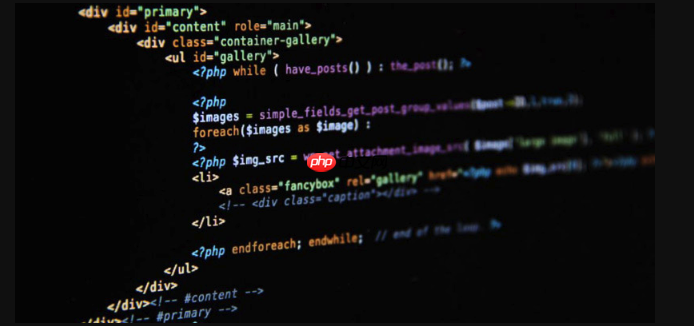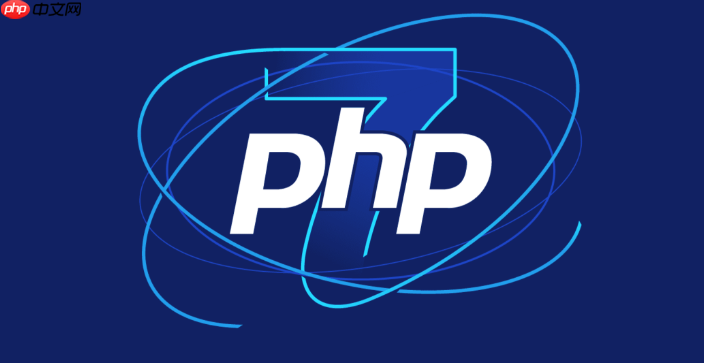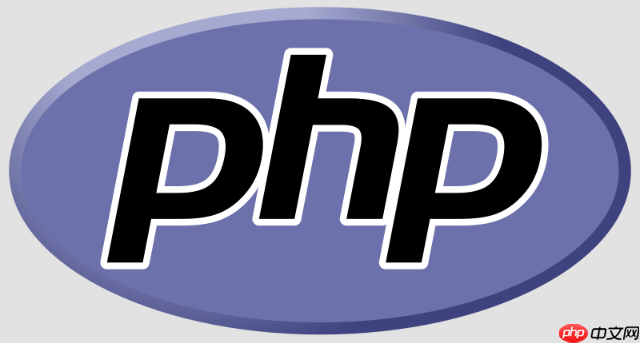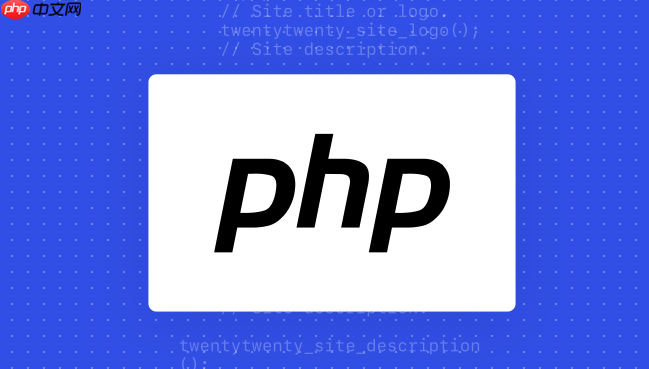 Backend Development
Backend Development
 PHP Tutorial
PHP Tutorial
 PHP realizes monetization of member management system PHP membership level and rights design skills
PHP realizes monetization of member management system PHP membership level and rights design skills
PHP realizes monetization of member management system PHP membership level and rights design skills
Jul 25, 2025 pm 06:18 PMThe core is that the database design is clear, including table structures such as users, membership_levels, membership_benefits; 2. The payment process relies on PHP to connect to gateways such as Stripe/Alipay and handle callback update status; 3. Use middleware to check membership levels to determine resource access; 4. Subscription management requires maintenance of subscriptions table timing task processing renewal/downgrade; 5. PHP has become an ideal choice for monetization systems due to its fast development, low cost and strong ecology; 6. Membership levels should be divided into three layers: free/basic/high-end, and equity should be anchored to value and scarcity; 7. Enhanced monetization also requires behavior tracking, personalized recommendation, security and cheating, and open API interfaces. The system achieves continuous monetization through solid technology implementation of business models.

The core of building a PHP member management system that can continuously monetize is two: one is the steady support of back-end technology, especially PHP's ability to handle users, payments and permissions; the other is the exquisite design of membership levels and rights, which directly determines whether users are willing to pay and how much they pay. To put it bluntly, it means thinking through the technology and business model and then implementing it solidly with code.

Solution
To implement a monetizable PHP membership management system, we have to start from several key points. First of all, database design is the cornerstone, which must be able to clearly store users, membership levels, corresponding rights, subscription records, and even payment flows. I usually design a users table that contains the membership_level_id field, which is associated with the membership_levels table, which defines names, prices, periods, etc. of different levels. At the same time, the membership_benefits table lists the specific rights and interests enjoyed by each level in detail, such as accessing specific content, downloading resources, priority customer service, etc., and is associated with membership_levels through many-to-many relationships.
Next is the payment process. PHP plays a core role here, and it is responsible for interacting with third-party payment gateways (such as Stripe, PayPal, or domestic Alipay and WeChat Payment SDKs). This usually involves generating an order, jumping to the payment page, receiving payment callback notifications, and updating the user's membership status based on the callback results. I personally prefer to use mature PHP payment library or the payment modules that come with the framework. They often encapsulate API calls and signature verification, which can greatly reduce the development workload and the probability of errors.

Then there is permission control. This is a key part of monetization of membership systems, ensuring that only paid users can access advanced content. In PHP applications, this can be achieved through middleware (such as Middleware in Laravel) or AOP (System-oriented programming). Each time a user requests a restricted resource, the system checks whether its membership_level_id meets the access requirements. For example, a route for advanced videos may require an auth.premium middleware that will determine the level of the current user.
Finally, don't forget to subscribe to management. For members who pay monthly or annually, automatic renewal, unsubscribe, upgrade/downgrade functions are required. This usually requires combining the subscription service of the payment gateway and maintaining a subscriptions table on our PHP backend that records the user's subscription cycle, status, and next deduction date. A Cron Job is particularly important at this time, which can regularly check for upcoming subscriptions, trigger renewal notifications or actual deductions.

Why is PHP an ideal choice for building a membership system with high monetization potential?
To be honest, when I started working on a project, I also struggled with what language I used. But PHP has obvious advantages in this matter of membership system. Think about it, its ecosystem is extremely mature. Frameworks like Laravel and Symfony have encapsulated many underlying things, and their development efficiency is ridiculously high. I remember one time I took on an urgent task and asked to launch a website with membership functions within two weeks. At that time, I relied on Laravel's Cashier (integrated Stripe) and its own certification system and was forced to get out. This ability to develop rapidly is a life-saving straw for projects that want to verify business models and seize the market as soon as possible.
Moreover, the deployment cost of PHP is relatively low, and most virtual hosts or cloud servers support PHP very well, which is a big temptation for start-ups or individual developers with limited budgets. You don't have to worry and effort to make complex server configurations just to run an application. Furthermore, the PHP community is huge. When encountering problems, you can search for a lot of solutions. Many ready-made libraries and components can be used, which invisibly lowers the threshold for development and maintenance. Therefore, from the perspective of rapid monetization and cost control, PHP is indeed a very "favorite" choice. It allows you to focus more on business logic and user experience, rather than in the quagmire of underlying technology.
How to design an attractive membership level system to maximize users' willingness to pay?
Designing a membership level is not something you can decide just by slapping your head, there are many tricks inside. My personal experience is, don’t think about different levels from the beginning, first think about who your core users are and what they value the most. For example, if your content is knowledgeable, then membership rights may be exclusive reports, in-depth courses, and expert Q&A; if it is a tool product, it may be advanced features, larger storage space, and faster processing speed.
I usually recommend starting from the three layers of "free-basic payment-premium payment". The free layer is a traffic diversion that allows users to taste the sweetness, but also leaves regrets, such as only reading the beginning of the article, or using basic functions. The basic payment layer is the core source of income, providing core values that users generally need and are willing to pay for. The premium payment layer is prepared for users who pursue the ultimate experience and are not sensitive to price, and provides unique and exclusive services, such as one-on-one consultation, customized services, offline event invitations, etc.
The key lies in "value anchoring" and "scarcity". The rights and interests of each level must make users feel that they are worth the money, and they are not available to the previous level. For example, I did a case where senior members can watch new content one week in advance, which is very attractive in the field of knowledge payment. Also, some "soft" rights can be added, such as exclusive community, member medals, and birthday privileges. Although these are not directly "functions", they can enhance the user's sense of belonging and dignity. Pricing strategies are also very important. You can try psychological pricing (such as 99 yuan instead of 100 yuan), or provide annual payment discounts to encourage users to subscribe for a long time. The most important thing is to clearly display the rights and interests comparison of each level so that users can see the value of payment at a glance.
In addition to level division, what other PHP technical points can enhance the monetization capabilities of member systems?
It is not enough to have a membership level alone. To make the system truly "make money", you have to put more effort into the technical level. In addition to the payment and permissions mentioned above, I think there are several points that are particularly worth investing in:
The first is data analysis and user behavior tracking . The PHP backend can record every action a user has on the website: what content he has read, which button he clicked, how long he stayed on which page, and what he put in the shopping cart and gave up. These data are gold mines! Through analysis, you can know which member level is the most popular, which rights and interests are the most capable of promoting conversion, and where users are lost. We can use PHP to write this data to a log file, or directly store it into the database, and then visually analyze it with some BI tools. With these insights, you can adjust pricing, optimize equity, and even develop new features more accurately.
The second is personalized recommendation and marketing automation . Based on user behavior data, the PHP backend can implement a simple personalized recommendation algorithm. For example, if a free user often browses advanced content on a certain topic, the system can automatically push paid membership rights advertisements for that topic, or send customized emails. This can be triggered regularly through PHP scripts, combined with email marketing API or in-site communication systems. This kind of marketing method that is "thousands of people and faces" is much better than the flood-style advertising.
Next is security and anti-cheating mechanism . Once the membership system involves monetization, it becomes the target of the attacker. PHP has rich practical experience in security, such as ensuring that all payment callbacks are strictly signed and verified to prevent forgery; filtering and escaping user input to prevent SQL injection and XSS attacks; and encrypting and storing sensitive data (such as payment credentials). In addition, there must be technical means to prevent member account sharing and content link theft, such as limiting the number of concurrent login devices on the same account, or DRM encryption of video streams. Although these technical details do not directly bring income, they are the "behind the scenes" who ensure the stable operation of the system and protect commercial interests.
Finally, don't forget the openness of the API interface . A good membership system should be able to easily integrate with other systems, such as CRM system, customer service system, data visualization platform, etc. By providing a clear and secure API interface, the PHP system can seamlessly connect with other services, forming a stronger ecosystem, further improving the value and operational efficiency of member services.
The above is the detailed content of PHP realizes monetization of member management system PHP membership level and rights design skills. For more information, please follow other related articles on the PHP Chinese website!

Hot AI Tools

Undress AI Tool
Undress images for free

Undresser.AI Undress
AI-powered app for creating realistic nude photos

AI Clothes Remover
Online AI tool for removing clothes from photos.

ArtGPT
AI image generator for creative art from text prompts.

Stock Market GPT
AI powered investment research for smarter decisions

Hot Article

Hot Tools

Notepad++7.3.1
Easy-to-use and free code editor

SublimeText3 Chinese version
Chinese version, very easy to use

Zend Studio 13.0.1
Powerful PHP integrated development environment

Dreamweaver CS6
Visual web development tools

SublimeText3 Mac version
God-level code editing software (SublimeText3)
 How to change the default opening method of PDF files in Windows 10_How to modify the default opening method of Windows 10 PDF
Oct 11, 2025 am 11:00 AM
How to change the default opening method of PDF files in Windows 10_How to modify the default opening method of Windows 10 PDF
Oct 11, 2025 am 11:00 AM
There are three ways to change the default PDF opening method to your desired application: through File Explorer, System Settings, or Control Panel. First, you can right-click on any PDF file and select "Open with" and check "Always use this app"; secondly, enter the "Default Application" setting through [Win I] and specify a program for .pdf; you can also manually associate it through the "Default Program" function of the control panel. If it is still changed after setting it, you need to check whether the security software has reset the association, and make sure that the PDF reader's own settings have been set to default to avoid conflicts between multiple PDF software and lead to unstable association.
 What should I do if the right-click menu on the Windows 8 desktop is stuck?_How to fix the stuck right-click menu on the Windows 8 desktop
Oct 11, 2025 am 10:42 AM
What should I do if the right-click menu on the Windows 8 desktop is stuck?_How to fix the stuck right-click menu on the Windows 8 desktop
Oct 11, 2025 am 10:42 AM
The right-click menu is stuck due to registry redundancy or software conflicts. It is necessary to clean up the ContextMenuHandlers items, delete non-New sub-items, use the search function to check the Directory path and delete redundant items, uninstall third-party software such as 360 or NVIDIA, and update the graphics card Bluetooth driver to solve the problem.
 How to use windows10 right-click menu management tool_windows10 right-click menu management tutorial
Oct 11, 2025 am 11:06 AM
How to use windows10 right-click menu management tool_windows10 right-click menu management tutorial
Oct 11, 2025 am 11:06 AM
Windows 10 right-click menu can be managed through third-party tools, registry editing, or command line. Firstly, it is recommended to use visual tools such as "Windows Right-click Menu Management Assistant" to add or delete menu items after running as an administrator; secondly, you can manually edit the registry, create a new shell item under the relevant path of HKEY_CLASSES_ROOT and set the command subkey to point to the target program. You need to back up the registry before operation; finally, you can use the open source tool ContextMenuManager to batch manage menu items through command line list, disable, enable and other parameters, which is suitable for advanced users.
 How to set the taskbar clock to the second in win11_How to set the seconds displayed in the win11 taskbar clock
Oct 14, 2025 am 11:21 AM
How to set the taskbar clock to the second in win11_How to set the seconds displayed in the win11 taskbar clock
Oct 14, 2025 am 11:21 AM
Windows 11 can enable the taskbar clock to display seconds through settings, registry, command line, or third-party tools. 1. Turn it on in settings: Go to Personalization → Taskbar → Taskbar Behavior and turn on "Show seconds in system tray clock"; 2. Registry modification: Create a new DWORD value ShowSecondsInSystemClock under HKEY_CURRENT_USER\SOFTWARE\Microsoft\Windows\CurrentVersion\Explorer\Advanced and set it to 1; 3. Command line execution: Run PowerShell as an administrator and enter regaddHKCU\Softw
 How to check the space occupied by system restore points in Windows How to check the space occupied by Windows system restore points
Oct 11, 2025 am 10:36 AM
How to check the space occupied by system restore points in Windows How to check the space occupied by Windows system restore points
Oct 11, 2025 am 10:36 AM
First, check the space occupied by the C drive restore point through the System Protection tab in the system properties. Secondly, use the PowerShell command vssadminlistshadowstorage to obtain the total volume shadow copy occupation. Finally, check the SystemRestore task frequency through the Task Scheduler to evaluate the storage impact.
 How to view and manage services in windows8 system_windows8 service management steps
Oct 11, 2025 am 11:15 AM
How to view and manage services in windows8 system_windows8 service management steps
Oct 11, 2025 am 11:15 AM
1. You can view and adjust Windows 8 background services by running services.msc, Task Manager, Computer Management and Command Prompt. The operations are applicable to quick access, resource monitoring, comprehensive configuration and batch query scenarios.
 How to cast the mobile QQ browser to the computer_Tutorial on how to cast the mobile QQ browser video to the computer
Oct 11, 2025 am 10:33 AM
How to cast the mobile QQ browser to the computer_Tutorial on how to cast the mobile QQ browser video to the computer
Oct 11, 2025 am 10:33 AM
You can cast mobile videos to your computer through QQ browser cross-screen traversal, Miracast mirroring or third-party software. First, make sure the device is connected to the same WiFi, use the same QQ account to log in to the QQ browser on both the phone and the computer, click the "Cross-Screen Travel" button on the video playback page and select the target computer to complete the screencasting; if the computer supports Miracast, you can click "Screen Mirroring" in the phone control center to select the computer name to connect; you can also scan the QR code through third-party software such as ApowerMirror to achieve high-definition transmission.
 How to optimize windows 8 system when it is running slowly_Tips for improving system speed in windows 8
Oct 11, 2025 am 10:45 AM
How to optimize windows 8 system when it is running slowly_Tips for improving system speed in windows 8
Oct 11, 2025 am 10:45 AM
1. Disable non-essential startup items through Task Manager to improve boot speed and system response; 2. Adjust visual effects to optimal performance in system properties to reduce graphics resource usage; 3. Use disk cleanup tools to delete temporary files and perform defragmentation to improve hard drive efficiency; 4. Turn off Windows Update automatic checking and delivery optimization functions in Update and Security to reduce background resource usage; 5. Select a high-performance power plan and set the minimum processor status to 100% to ensure full release of hardware performance.



